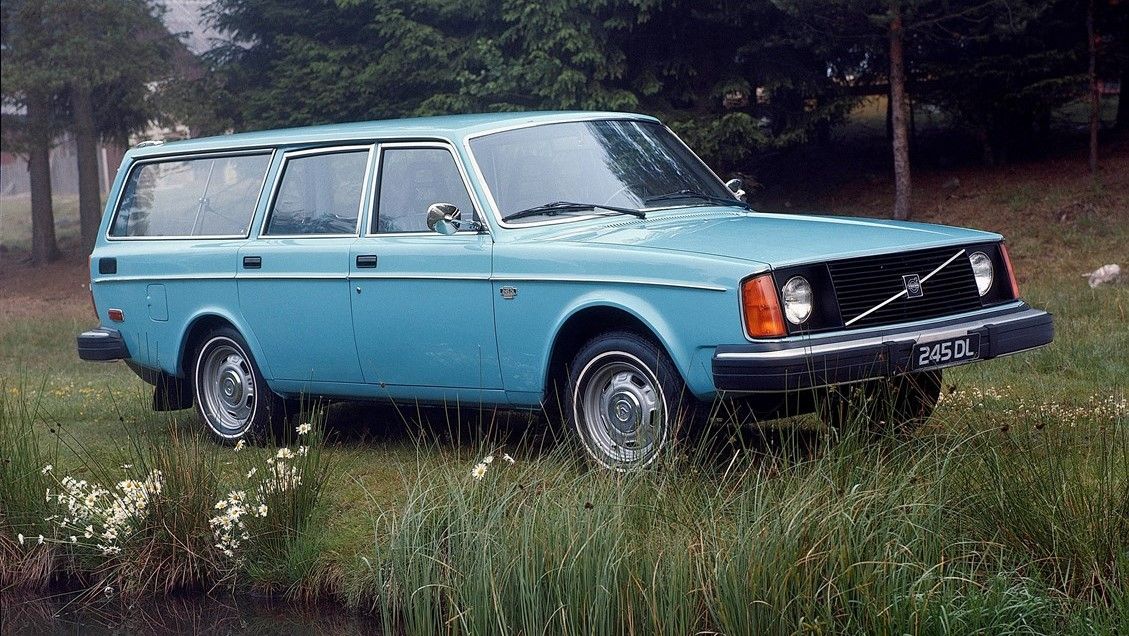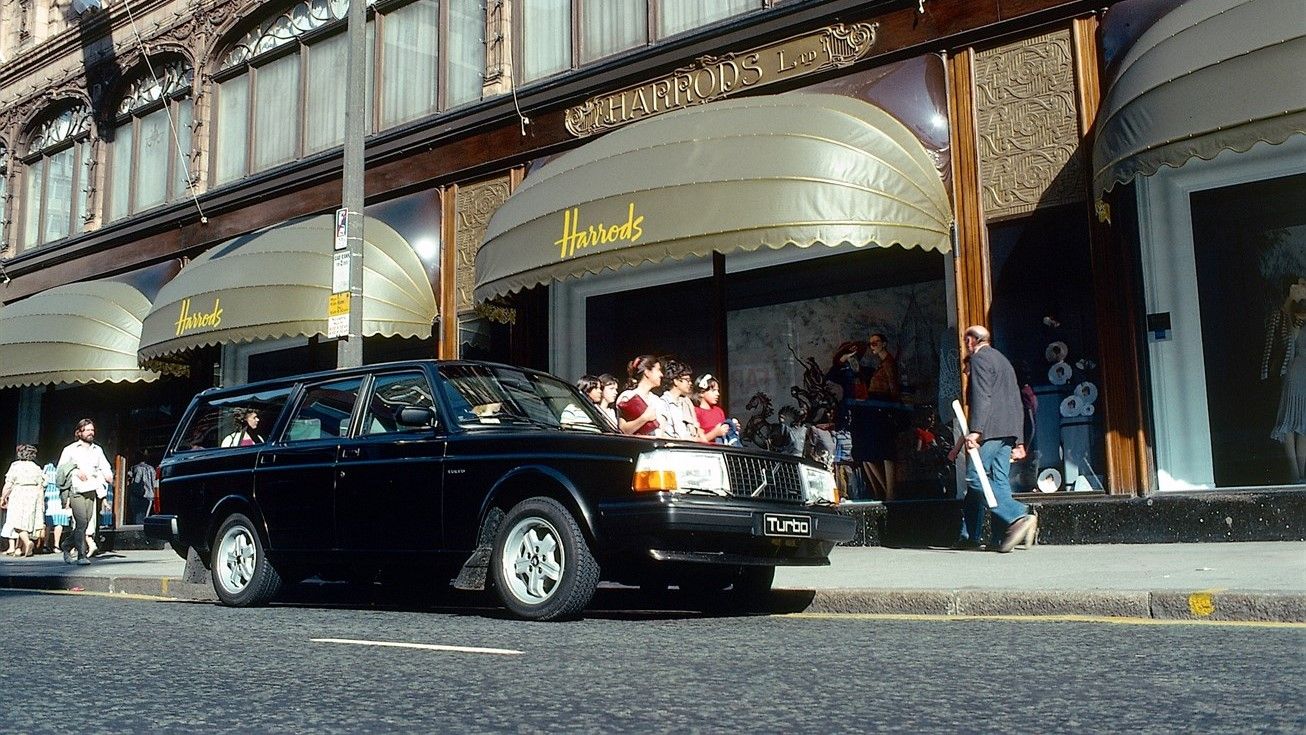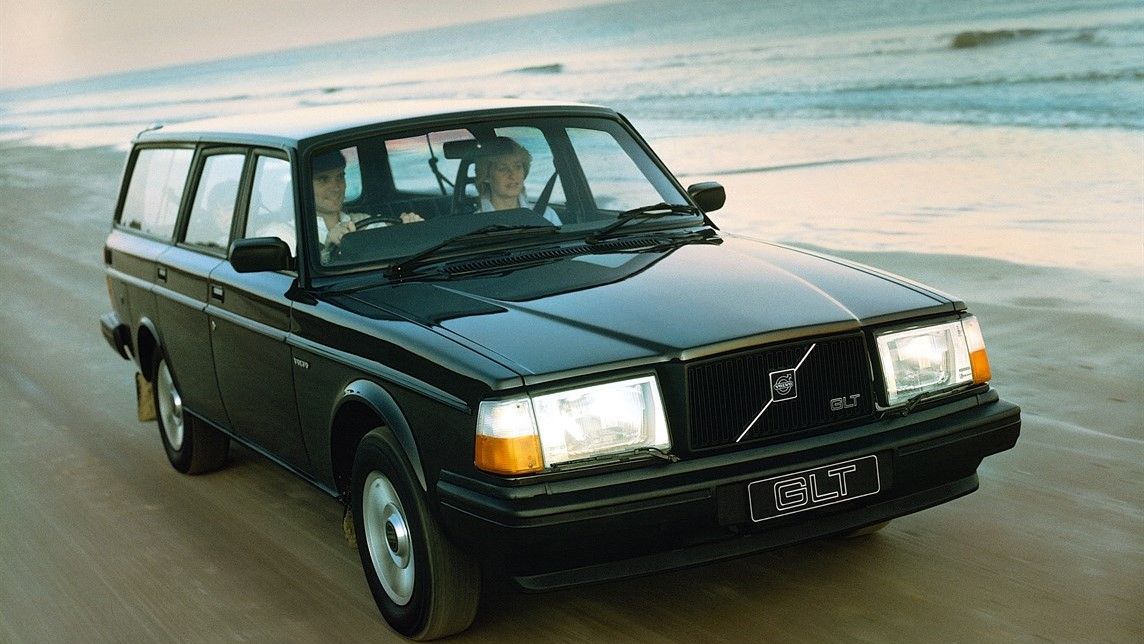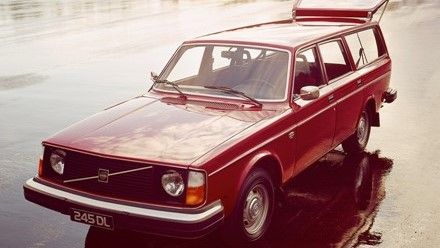Volvo has a long and complicated history that, just like any other manufacturer, is full of different design eras. With classic cars like the 1800ES and 140 series, the brand had a history of beautiful and functional designs. However, for many, the brand means one thing and one thing only: boxy designs.
Introduced in 1974 the Volvo 200 series of vehicles utilized much of the highly successful 140 predecessors. The Swedish marque seized the opportunity to bring a fresh face to the company. The 200 series saw all curves removed from the coupe, estate, and saloon cars. The new front fascia is a “shovel nose”. The models would stay in production until 1993 were its successors the 850 and 760 would continue this design practice. The 244 and 245 are largely the same, only the latter has an estate body type. The number 242 denotes that a car is a coupe. Although in 1981 when the car received the first of two facelifts, all models sold as the 240.
Volvo's best model is an affordable classic
Why You Should Buy A Volvo 240
When looking at any model in the 240 range, one word dominates the discourse: practicality. This rings true for Volvo today with their large SUV offerings as well as their current saloon and estate cars. The wagon bodied 245 takes this to another level with a mammoth 2151 liters of trunk space in an incredibly useable cuboid shape. Making this space even more useable, there's minimal lip to move objects over, meaning an owner can load objects in and out with ease.
Practicality is rarely the most exciting thing, especially for enthusiasts. The 240 balances this with the model's racing pedigree. Volvo's Turbo models entered touring car, where they saw great success. The company won the European Touring Car Championship in 1985. The cars raced under the Group A rules which required some 5,000 examples of the Turbo model came to the road. The Turbo model produced roughly 350 horsepower from a 2.1 liter engine. In a straight line, it could easily dominate cars like BMW's 635 CSI and the Rover Vitesse.
Unfortunately, not all 240s in the model's near twenty-year production are as exciting as these. However, on the market are a broad range of engines and trim levels to choose from. The model's bread and butter are a mixture of four-cylinder gas and diesel engines. There are some more exciting engines in the lineup. The cars were available with two V6 engines, the B27 2.6 and the B28 2.9-liter unit. These saw development in conjunction with Peugeot and Renault. A more remarkable engine is the six-cylinder diesel, which no manufacturer made before Volvo. The 240 left markets before Volvo's inline-five engine launched, these are some of the smoothest engines to have ever seen production.
How Long Do Volvo 240s Last?
Since Volvo's foundation in 1927, the manufacturer has become a byword for safety. Volvo claims that in the era of the 240 their car became the standard in safety regulation in the United States. With disc brakes all around, optional power steering, and large front and rear crumple zones, the 240 continued the marque's reputation. Before this model, Volvo pioneered the three-point seat belt. More recently, the brand introduced blind-spot monitoring before anyone else, and even their most recent coupe-like model, the C30 began life as a safety car concept. As a result of these features, more Volvo drivers walk away from crashes but also more Volvo cars avoid and are repairable after crashes, with their severity reduced.
Meeting this reputation for safety is Volvo's reliability rating. In 2021, contemporary Volvo models received a reliability rating of 92.3%, this only places the manufacturer in the top 20 most reliable. Volvo must have let this slide a little over recent years and their Geely ownership. The old 240 models can run forever. The newest cars will soon be turning thirty years old, so the usual suspects of wiring issues, rust, and wear of movable parts are all present.
With the car's widespread success, there are plenty of places to find spare parts, be that the aftermarket or other cars. The wonderful thing about this era of Volvo is their analog nature. This means much of the work can is possible without the aid of computers and with the assistance of a Haynes manual.
How Much Is A Volvo 240 Worth?
Volvo claims that 959,151 245s exited their factory and that the total production of 240s is over 2.5 million. With Volvo's penchant for both reliability and safety, this means that there are plenty of examples floating around on the used market. With more supply than many classic cars, this has driven the price of certain models in the lineup down. Classic, an aggregator of classic car sales information, finds that the average 240 is currently worth $8,595. The highest recorded sale is only $35,000, this example had only 60,000 miles and came in the boring yet iconic crème yellow. Classic record that examples have sold for as little as $2,100. Unlike many cheap classics, these examples do not need heavy restoration, but instead are less desirable colors with higher mileages.




